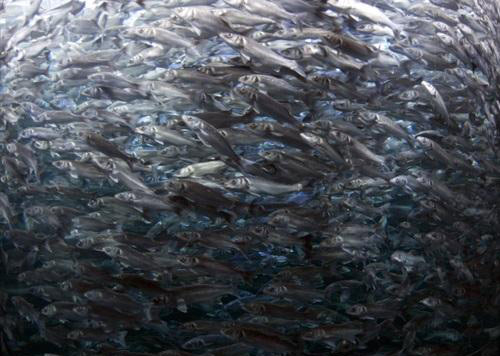
More than 400 so-called ‘dead zones’ exist in oceans and seas worldwide: areas where aquatic life is limited or completely absent, largely because there isn’t enough oxygen to support it. Manchester scientists are looking at how fish tolerate harsh environments in order to understand how they might survive.

New research has revealed how the heart is one of the major factors that determine whether a fish lives or dies in oceanic dead zones.
Dr Holly Shiels, Senior Lecturer in Animal Physiology at Manchester, says the findings may explain why some fish are able to survive harsh environmental conditions better than others.
Hypoxia: a growing problem
Our research may help in the battle to understand why fish stocks dwindle in polluted marine environments with low oxygen levels – known as hypoxia.
Hypoxia, says Dr Shiels, is a growing problem in coastal environments, and is likely to have enduring impacts on aquatic ecosystems and the fish that live within them.
Hypoxic dead zones can occur naturally, but their recent increase in size and distribution is often caused by human input of nutrients into the water, encouraging plant growth and algal blooms. The extra organic matter dies, sinks to the bottom and decays, creating hypoxic conditions.
By studying the European sea bass, an important commercial and ecological marine fish, the Manchester scientists, in collaboration with Guy Claireaux’s group at Ifremer in France, have identified a link between hypoxia-survival and the fish heart. They think this link is important in understanding how fish tolerate harsh environments.
Studying fish tolerance
First, Dr Shiels' team revealed that hypoxia-tolerance is a stable trait – during repeated hypoxic-challenges over the 18-month study, certain fish in a population were consistently more tolerant of hypoxia compared with others.
They then went on to show that fish who tolerated hypoxia had hypoxia-tolerant hearts. This prompted the team to suggest that the heart and the cardiovascular system is a crucial survival factor.
Our work is timely, as hypoxia is a pervasive and rapidly growing problem in coastal environments worldwide. Our study suggests the hypoxia-tolerance of the fish cardiovascular system may be key in determining fish distribution and survival in the changing oceans.
Dr Holly Shiels / Senior Lecturer in Animal Physiology
Dr Shiels says: “We were able to show that hypoxia-tolerant hearts in fish correlate with a whole-body effect. In other words, not only is the heart more resilient to hypoxia, but the fish as a whole is.”
Although fish don’t breathe as humans do with lungs and air, they still take in oxygen through their gills. So when oxygen in water is reduced, fish struggle to breath just as humans would on top of a mountain, where the air is thin.
Hypoxic dead zones can occur naturally, but their recent increase in size and distribution is often caused by human input of nutrients into the water, encouraging plant growth and algal blooms. The extra organic matter dies, sinks to the bottom and decays, creating hypoxic conditions.
Dr Shiels added: “Our work is timely, as hypoxia is a pervasive and rapidly growing problem in coastal environments worldwide. Our study suggests the hypoxia-tolerance of the fish cardiovascular system may be key in determining fish distribution and survival in the changing oceans.”
